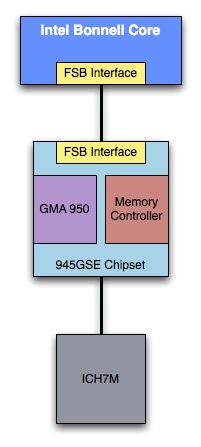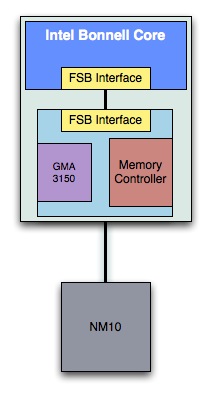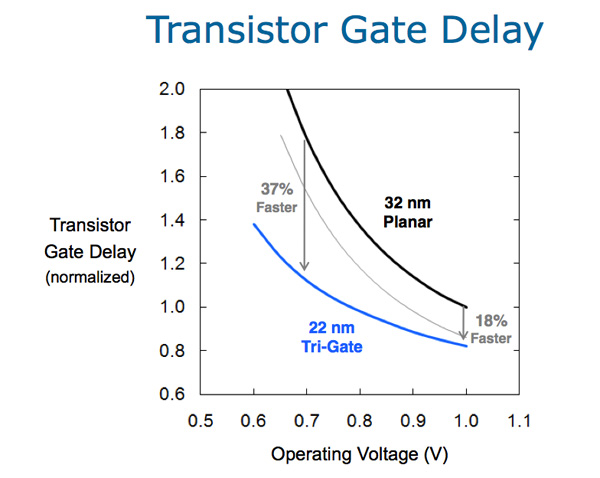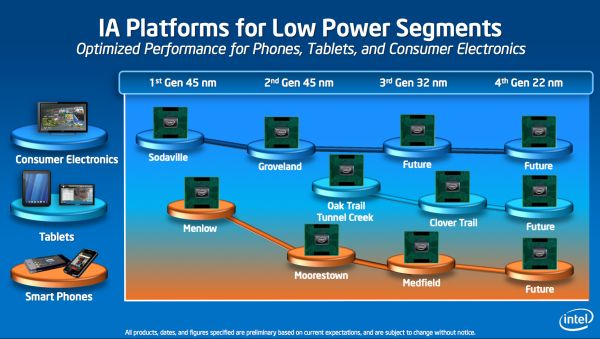Intel's Silvermont: A New Atom Architecture
by Anand Lal Shimpi on May 12, 2011 6:18 PM EST- Posted in
- CPUs
- Intel
- Atom
- Silvermont
- SoCs
Brooke Crothers broke a very important story today - he published the name Silvermont. Atom's first incarnation came to us in 2008 as a Pentium-like dual-issue in-order microprocessor. The CPU core was named Bonnell, after the tallest point in Austin at around 750 feet. Small mountain, small core. Get it?
Bonnell and the original Atom were developed on a 5-year cadence, similar to how Intel ran things prior to the Core 2 revolution (the P6 to Netburst/Pentium 4 move took 5 years). With the original chip out in 2008, five more years would put the next major architecture shift at 2013, which happens to be exactly when the Cnet report mentions Silvermont will be introduced.
When I first met with the Atom design team they mentioned that given the power budget and manufacturing process, the Bonnell design would be in-order. You get a huge performance boost from going to an out-of-order architecture, but with it comes a pretty significant die area and power penalty. I argued that eventually Intel would have to consider taking Atom out of order, but the architects responded that Atom was married to its in-order design for 5 years.
and_PlatformControllerHub_package2_sm.jpg)
Intel's Moorestown - same Atom core, just more integrated
Since 2008, Atom hasn't had any core architecture changes. Sure Intel integrated the GPU and memory controller, however the CPU still communicates with both of them over an aging FSB. The CPU itself remains mostly unchanged from what we first saw in 2008. Even Intel's 32nm Atom due out by the end of this year doesn't change its architecture, this is the same dual-issue in-order core that we've been covering since day 1. The 32nm version just runs a bit quicker and is paired with a beefier GPU.
|
Intel Atom "Diamondville" Platform 2008
|
Intel Atom "Pine Trail" Platform 2009-2010
|
 |
 |
Silvermont however changes everything. It is the first new redesign of the Atom architecture and it marks the beginning of Atom being on a tick-tock cadence. Say goodbye to 5 year updates, say hello to a new architecture every 2 years.
Given what Intel said about Atom being in-order for 5 years, I think it's safe to say that Silvermont is an out-of-order microprocessor architecture. The other big news is that Silvermont will be built using Intel's 22nm transistors. What may not have been possible at 45nm gets a lot easier at 22nm. Assuming perfect scaling, a chip built on Intel's 22nm process would be a quarter the size of the same chip built at 45nm. With Apple paving the way for 120mm2+ SoCs, Silvermont can be much more complex than any Atom we've seen thus far.

Intel's 22nm transistors offer huge gains at low voltages, perfect for Silvermont
By 2013 Intel's 22nm process should be very mature, which maintains Intel's sensible design policy of only moving to a new architecture or a new process, but not both at the same time in order to minimize risk. With 22nm debuting in Ivy Bridge at the end of this year (with availability sometime in 1H 2012), this puts Silvermont at a full year behind
Intel isn't talking core counts at this point, but for 2013 I'd expect both monolithic dual and quad-core variants. If we use history as any indicator, Intel will likely drop the FSB in favor of a point-to-point bus interface between Silvermont and its cohorts.
The big question is about GPU technology. Intel has historically used GPUs licensed from Imagination Technologies in its smartphone/tablet/MID line, while opting for its own in-house GPU solutions for nettops/netbook versions of Atom. At 32nm the rumor is that may change to an all Imagination lineup, but at 22nm I do wonder if Intel will keep licensing 3rd party IP or switch to its own.
Intel is expected to announce more details about its Atom roadmap at an analyst event next week. While the expectation is that we'll see Atom based Android smartphones this year, I'm personally quite interested in Silvermont.
Single and dual-core 32nm Atom designs should be able to hold their own in a world dominated by dual-core ARM Cortex A9s, but an out-of-order Atom on an aggressive roadmap is something to be excited about.
By 2013 we should be seeing smartphones based on Tegra 3 and 4 (codename Wayne and Logan) and ARM's Cortex A15. GPU performance by then should be higher than both the PS3 and Xbox 360 (also implying that Silvermont needs Sandy Bridge level graphics performance to be competitive, which is insane to think about).











53 Comments
View All Comments
starfalcon - Thursday, May 12, 2011 - link
What?http://www.anandtech.com/show/4262/asus-k53e-testi...
Looks like in these eight games Brazos can't match SB for graphics performance.
mianmian - Thursday, May 12, 2011 - link
Keep in mind that E350 has a MUCH weaker CPU performance. The lower FPS would mostly due to the weak core.starfalcon - Thursday, May 12, 2011 - link
Yeah, it's only at 8.5 GBs of graphics bandwidth also while SB systems are at 21.3 GBs, seems to be pretty far behind in 3DMark also, which is that at least somewhat CPU limited also?Obviously not made for serious gaming but it's still faster than ION looks like.
poopypants_johnson - Thursday, May 12, 2011 - link
Yeah, but that's comparing a 35w, 2.5ghz CPU to an 18w, 1.6ghz CPU. Graphics can't do it all by themselves, especially when the CPU has a low clockspeed. If you compare the GPUs:Intel's 12EU equals about 48 AMD SPs, running at ~1000mhz vs AMD's 80 SPs running at 400mhz.
So basically, the horsepower should be comparable, but Intel's is far less efficient and scalable, and takes up far more die space. The reason Intel's next gen graphics only has 16EU is because their architecture sucks, it won't scale near linearly like AMD's or Nvidia's.
dagamer34 - Friday, May 13, 2011 - link
So to sum up what you've said. Intel is about as good making GPUs as Microsoft is making a good mobile operating system. They've certainly improved from the past, but there are several examples of companies just doing it better.StevoLincolnite - Friday, May 13, 2011 - link
Can't forget drivers, they are probably the biggest issue, they are poor and buggy, they make AMD and nVidia's drivers look like they're gold plated in comparison.AMD and nVidia have massive driver development teams and have spent years honing and fine tuning the drivers for better performance and compatibility, Intel still has a long way to go in that regard.
Heck didn't it take Intel a year or so just to add TnL and Shader Model 3 capabilities to it's drivers after the x3100 IGP released? Even then the TnL still sucked and Intel went with a profiling system so some games used software TnL.
These days if it doesn't have an nVidia or AMD GPU I am simply not interested.
ProDigit - Friday, May 13, 2011 - link
Just to interject,we all want to play games on netbooks, but they never where intended to run games on.
If you want games, go with AMD, or wait until forever, when AMD and Intel become one, and they actually merge an AMD graphics unit on an Atom die.
But until then, Intel won't beat AMD in the gaming section, and at best is a super efficient processor inbetween ARM and AMD, but running windows.
Buy Intel if you need a device to do the basics with, and that needs a +10hrs battery life. Buy AMD if you play games. Intel and Nvidia (ION platform) is a dying breed.
duploxxx - Friday, May 13, 2011 - link
watch those SB scores to be killed in 3-4 weeks when LIano arrives :)a HD2000 level would be to weak against competition in 2013, perhaps in the low power systems sure, but not the level of netbook
starfalcon - Sunday, May 15, 2011 - link
Also note how a HD 5470 which is faster than Brazos gets beat by SB graphics, so Brazos graphics aren't better than SB.Would be impressive if Ivy Bridge gets to around Llano levels also, depending on the system.
starfalcon - Sunday, May 15, 2011 - link
Also, it makes me laugh when someone is happy or saying Llano is going to kill SB graphics, think about what you are saying.